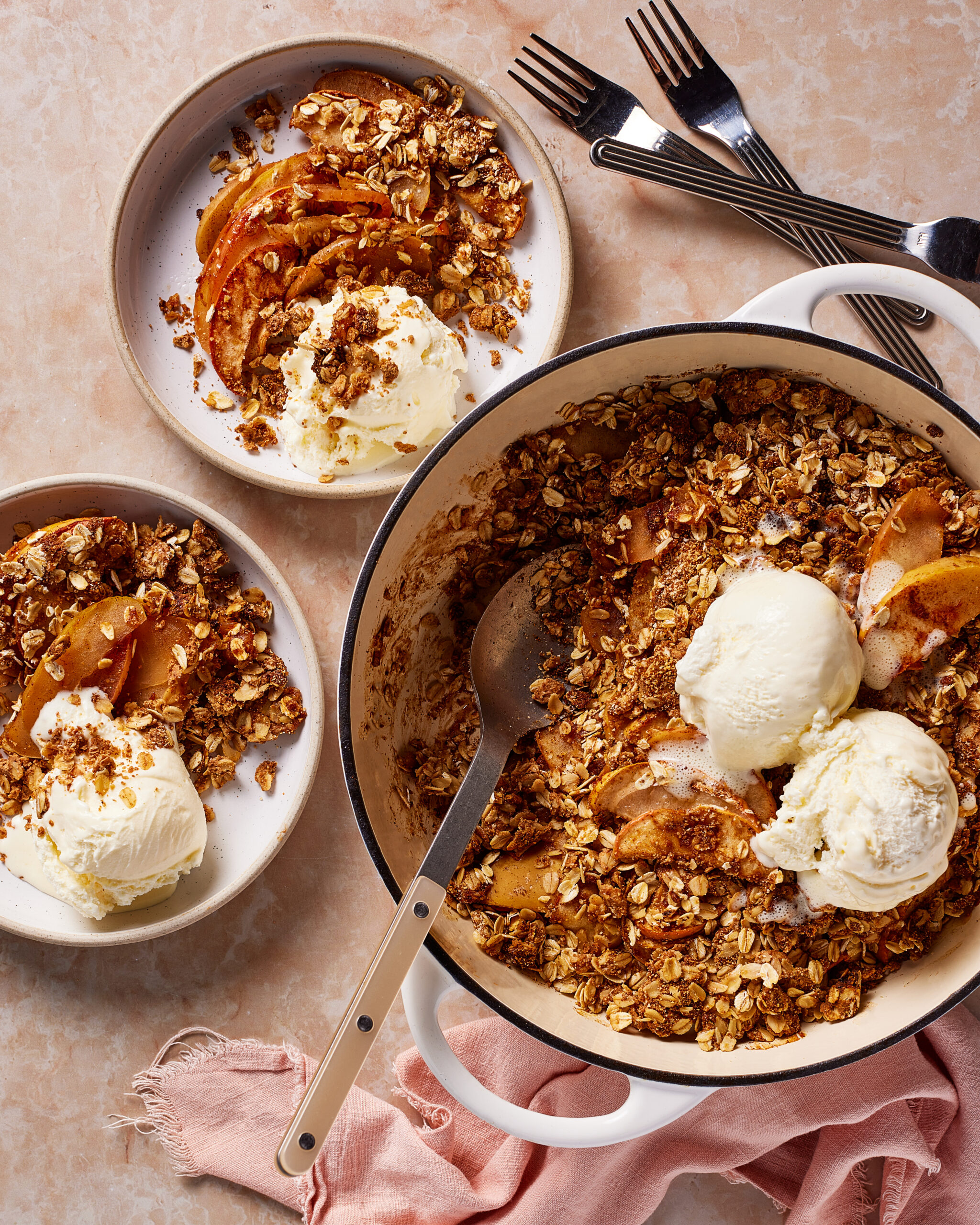recipes
lifestyle
wellness
motherhood
mindset
About
E-Books
Blog
Freebies
partnerships
hi, i'm lauren!
hey there!
I’m on a hot mission to help you balance your hormones & live your best life.
categories
Home
Quiz
Get In Touch
The Course
search:
Cookbook
Recipe key
GF
VG
P
Vegan
Gluten Free
Paleo
DF
Dairy-Free
download now
Join Hormone Healthy Eats!
Become a SFNSG insider to get my monthly Substack, Hormone Healthy Eats! Packed with the latest hormone-healthy recipes
+ tips.
jump to recipe >
Protein-rich breakfasts, meals, snacks and even desserts are currently trending in the wellness world, and as a nutrition + hormone health practitioner, this is one trend I’m fully in support of (and hope it sticks around).
I can vouch both personally and professionally that adding more high quality sources of protein to every meal and snack consumed will have a positive benefit on your blood sugar and hormones, thereby affecting your energy, mood, libido, menstrual cycle, fertility, skin, weight and overall appearance as a result.
It’s also actually easier than you think, and this blog post is going to cover all of the simple and delicious ways you can sneak more protein into your breakfasts, thereby positively shifting the entire course of your day (and life!) as a result.
Snag all of the details and protein-rich breakfast recipes + tips below.
Want to learn more about how to eat in way that supports your metabolism and hormone health? Check out my online course, opening for enrollment soon!
WHY PROTEIN IS IMPORTANT FOR HORMONE BALANCE
Protein is one of three essential macronutrients, alongside carbohydrates and fat, and is an essential structural component of ALL hormones, which means you have to consume sufficient protein to make enough hormones to function properly.
It’s also used to make muscles, tendons, organs, skin, enzymes, neurotransmitters and various molecules that do everything from boost metabolic health, fertility and protection during pregnancy to proper immune and cognitive function as well as regulating your menstrual cycle and blood sugar.
Bottomline, it’s a very well-researched non-negotiable when it comes to optimal hormone balance and health.
WHY A PROTEIN-RICH BREAKFAST IS IMPORTANT FOR HORMONE BALANCE
Not only is consuming enough protein daily important for a symptom-free menstrual cycle and balanced hormones, but it’s particularly beneficial to start your day off with a protein-rich breakfast (around 30g of protein), as it sets the tone for how your blood sugar (and thereby hormones) respond the rest of the day.
This is because upon waking, our blood sugar is typically very low, or in a fasting state, after not eating all night. Thus when we opt for coffee or eat a sweet or carb-heavy breakfast first thing (like pastries, cereal, doughnuts, etc.) the glucose enters our bloodstream quickly, leading to a massive spike, triggering a rush of insulin to remove the excess glucose, thereby resulting in a subsequent crash, increased fat storage, decrease in energy and intense cravings throughout the entire rest of the day.
We can avoid this cascade of events by instead choosing a breakfast rich in protein, with some fiber (leafy greens, sweet potatoes, legumes, etc.) and fat (ghee, avocado, olive oil, etc.) which will help you feel steady, satisfied and energized afterwards, reducing cravings and prolonging satiation between meals (meaning you don’t need to rely on snacks or caffeine as often to get you through the day).
HORMONE HEALTH BENEFITS OF A PROTEIN-RICH BREAKFAST
Here are some of the specific hormone health benefits you can expect when prioritizing high quality protein sources (20-30 grams of protein) at breakfast:
+ Regulates Glucose (i.e.blood sugar)
+ Improves Satiety
+ Decreases Appetite + Hunger Levels
+ Increases Muscle Mass + Strength
+ Improves Metabolic Health + Fat Burning
+ Helps Repair Tissues + Organs
+ Reduces Mood Swings
+ Promotes Optimal Ovulatory Cycles
+ Boosts Energy
+ Reduces Nausea + First-Trimester Pregnancy Symptoms
WILL EATING 30 GRAMS OF PROTEIN AT BREAKFAST HELP YOU LOSE WEIGHT?
As we covered earlier, eating a protein-rich breakfast supports optimal hormone function, thereby aiding in weight loss and helping you maintain an effortless, healthy weight.
There are numerous studies that support this, primarily because protein is the most satiating macronutrient, meaning it reduces your levels of hunger-inducing hormone ghrelin and increases leptin, your satiety hormone. This helps to reduce cravings and lowers your overall intake of food throughout the rest of the day.
It also helps you increase muscle mass and boosts your metabolic rate, which increases the number of calories you burn and improves insulin sensitivity, helping you use food for fuel instead of storing it as fat.
HOW MUCH PROTEIN DO I NEED TO CONSUME FOR BALANCED HORMONES?
While every person’s needs will vary slightly based on activity levels, weight, age, sex and hormone health status, most studies confirm that the average person requires .7-1 gram of protein per pound per day, which can average anywhere from 60-100g of protein per day for women in their reproductive years. If you eat three meals per day, this averages out to about 20-30g of protein per meal.
*It’s also important to note “grams of protein” refers to the number of grams of the macronutrient protein, not the weight of the protein source itself. For example, an average chicken breast weighs 174 grams (or about 6 oz) and has about 40-50 grams of protein per serving. Thus you’d be consuming 40-50g of protein when eating a chicken breast.
HORMONE HEALTHY PROTEIN SOURCES
These are some of the most bioavailable, protein-rich foods you can include in your breakfasts (and any other meals/snacks throughout the day) to maximize your protein intake.
*Please note that while there are plenty of other foods that contain protein, the ratio is not optimal or realistic. For example broccoli contains 2.5g of protein per cooked cup, which means you would need to eat around 10 cups of it in order to get 25g of protein, the same as if you were to eat a small, palm-sized portion of cooked chicken breast. Which let’s be real, NOBODY is eating that much broccoli, and if you did, you’d most likely experience some serious digestive distress as a result.
+ Liver/Organ Meat
29g of protein per 3 oz serving (about the size of your palm)
+ Pasture-Raised Poultry
27g of protein per 3 oz serving
+ Grass-Fed Red Meat
22g of protein per 3 oz serving
+ Wild-Caught Seafood
22g of protein per 3 oz serving
+ Bone Broth
10-20g of protein per cup
+ Lentils/Beans
18-20g of protein per cup, cooked
+ Cottage Cheese/Ricotta Cheese/Greek Yogurt
14g protein per 1/2 cup
+ Quinoa
8g protein per 1/2 cup
+ Nut Butter
7-8g protein per 2 tbsp
+ Pasture-Raised Eggs
6g of protein per egg
HOW TO GET 30 GRAMS OF PROTEIN FOR BREAKFAST
There are a number of combos and ways to get 30g of protein for breakfast (including all of the recipes below) but this will obviously largely depend on your unique preferences, schedule, lifestyle, etc. That being said, here are some general meal ideas and tips to help you incorporate more protein into your breakfast for optimized hormone balance.
+ Make A Protein Smoothie
This is one of my go-tos (as you’ll see from all of the recipes below), as it’s such an easy way to sneak nutrients into your daily diet, especially protein! Most protein powders have about 20g of protein per serving, so I like to add in 2 tbsp of nut butter (7g of protein) + a tbsp of hemp or chia seeds (3g of protein) to get that 30g. *Make sure to use a high quality protein powder like this brand.
+ Egg-Based Breakfasts
Eggs are such a breakfast staple, however if you’re looking to get in 3og of protein for breakfast I encourage eating a minimum of 2-3 (12-18g of protein) eggs alongside either a serving of chicken sausage (13-18g of protein per two links/patties), smoked salmon (16g of protein per 3 oz serving), steak (22g protein per 3 oz serving) or scrambling them with cottage cheese (14 g protein per serving).
You could also add in some toast with nut butter (7 g protein per 2 tbsp) or ricotta spread (14g per 1/2 cup) on it. OR try using eggs to top a protein-rich savory breakfast bowl, see below.
+ Savory Breakfast Bowls
Savory breakfast bowls are one of my favorite breakfast, brunch or lunch options, and I eat them A LOT. They’re so tasty, filling and a great way to get in all the hormone healthy macros — protein, fat and fiber.
I like using a protein-rich base like quinoa (8g of protein), adding in some sort of greens for antioxidants (arugula, spinach, kale, collards), fiber-rich veggies like sweet potato, Brussels sprouts or cauliflower, a healthy fat like avocado or chopped nuts and seeds and topping with a yummy protein source like soft-boiled eggs (12g of protein per two eggs), shredded chicken (27g of protein per 3 oz serving), ground meat (22g per 3 oz serving) or baked salmon (17g per 3 oz serving) and of course a yummy sauce for flavor. *Scroll to the end for one of my favorite savory breakfast bowl recipes to date!
+ Greek Yogurt or Cottage Cheese Parfaits
Use 1 cup full-fat unsweetened greek yogurt or cottage cheese as a base (28g) and top with fresh berries, chopped nuts or seeds, a drizzle of honey and optional grain-free granola. If one cup seems like a lot you could always cut it in half (14g) and stir in a scoop of protein powder (20g protein per serving) or collagen (14g protein per serving) too.
+ Protein Oats
You can either use gluten-free rolled oats (5g per 1/2 cup) or protein oats (10g per 1/3 cup) and stir in collagen powder (14g protein per serving), three egg whites (10g protein per serving), then top with 2 tbsp nut butter (7g protein) or nuts and seeds. I like to bake oatmeal (as it makes easy leftovers to reheat for breakfasts) using protein oats and topping with a bit of nut butter and greek yogurt (14g protein per 1/2 cup) for serving.
+ Leftovers
While it might seem weird at first, eating your leftovers from the night before is not only a super easy and convenient breakfast option, but also a great way to sneak in protein (as we tend to prioritize this more with savory dinner meals). Try reheating soups, casseroles, stews, stir fries, etc., using leftover meat or burger patties in an omelet or scramble or topping any leftover rice, beans or grain-based dishes with fried eggs or sausage.
+ Sneaky Protein-Rich Add-Ins
If you’re looking for other ways to sneak more protein into your breakfast (or meals, snacks, etc.) one of my favorite hacks includes stirring a scoop of flavorless collagen peptides (15g protein) into oats, chia pudding, smoothies or warm beverages like coffee. *This is my favorite brand and you can use code SOFRESH to save 20%.
I also use bone broth as the main liquid in most of my cooking (grains, soups, stews, etc.) as it adds in anywhere from 10-20g of protein per cup (along with plenty of other gut healing amino acids like glutamine and proline). If you crave sweet things in the morning, try it out in my bone broth hot chocolate (sounds weird, tastes incredible).
If you tend to crave more sweeter things like baked goods or pancakes in the morning, try sneaking in collagen as well as beans like chickpeas (especially good in muffins) or dairy like ricotta or cottage cheese (hello cottage cheese pancakes!)
CYCLE SYNCING BREAKFAST TIPS
While the research shows consuming high quality protein at breakfast is important to do daily, if you’re looking for a way to start of slow or sync up with the rhythms of your menstrual cycle, I encourage clients to prioritize it during their luteal phase, which occurs immediately after ovulation (typically about half way through your cycle) up until you get your period.
Because our metabolic needs shift during this phase, requiring an extra 200-300 calories per day, and our blood sugar destabilizes (meaning we tend to get more drastic spikes and crashes from sugary or carb heavy, nutrient-void foods), consuming 30g of protein with breakfast can make all the difference in mitigating many of those common pms symptoms like cravings, mood swings, fatigue, headaches, etc. *If you want more tips on how to eat in a way that supports a healthy menstrual cycle, check out this post.
30 GRAMS OF PROTEIN BREAKFAST RECIPES
Below is a roundup of some of my favorite protein-rich recipes I consume regularly for breakfast and brunch (bonus, my kids love most of them too!)
Protein-Rich Smoothies
+ Better Than Botox Green Smoothie
+ Dark Chocolate Avocado Fertility Smoothie
+ Healthy Copycat Wendy’s Frosty
+ Healthy Shamrock Protein Shake
+ Pumpkin Pie Fertility Boosting Smoothie
+ Dark Chocolate Strawberry Fudge Smoothie Bowl
+ Green Baby Makin’ Machine Smoothie
+ Chaga Chocolate Fudge Smoothie Bowl (pg. 33 of the 28 Day Reset Plan)
+ Mint Chocolate Chip Smoothie (pg. 53 of the 28 Day Reset Plan)
+ Best Ever Green Smoothie (pg. 77 of the 28 Day Reset Plan)
+ Salted Peanut Butter Cup Smoothie (pg. 53 of the Fertility Boosting Fundamentals Guide)
Protein-Rich Breakfast Bowls, Dishes + Toasts
+ Gut-Friendly Sweet Potato Pesto Bowl*cook quinoa with bone broth + top with 2 eggs
+ Sheet Pan High Protein Breakfast Burritos
+ High Protein Cottage Cheese Egg Bake
+ Cottage Cheese Protein Pancakes
+ The BEST Protein Chia Pudding
+ Cottage Cheese Egg Bites with Sundried Tomatoes, Spinach + Feta
+ Creamy Quinoa Porridge + Quick Berry Compote*stir in one scoop of collagen
+ Gut Healthy Papaya Boat Bowls *use 1 cup cottage cheese or greek yogurt as filling
+ Whipped Cottage Cheese Toast
+ High Protein Strawberry Cheesecake Chia Parfait (recipe @ my Substack)
+ One-Pan Egg Shakshuka (pg. 39 of the 28 Day Reset Plan)
+ Savory Romesco Breakfast Bowl (pg.64 of the 28 Day Reset Plan)
+ Creamy Chocolate Maca Breakfast Porridge *add scoop collagen (pg. 75 of the 28 Day Reset Plan)
+ Protein-Packed Breakfast Bowl *see recipe below
Protein-Rich Oats
+ Blended Overnight Oats (3 Ways!) *use protein oats + collagen
+ High Protein Carrot Cake Overnight Oats
+ Gut Healthy Pumpkin Pie Overnight Oats *use protein oats + collagen
+ Spiced Apple Pie Baked Oats *use protein oats + collagen
+ Postpartum Peanut Butter Banana Oatmeal *use protein oats + collagen
+ Pumpkin Pie Baked Oatmeal *use protein oats + collagen
+ Peaches N’ Cream Baked Oats *use protein oats + collagen
+ Gut-Friendly Carrot Cake Baked Oatmeal *use protein oats + collagen
+ Strawberry Rhubarb Cheesecake Baked Oatmeal *use protein oats + collagen
+ Maple Banana Walnut Baked Oats *use protein oats + collagen
+ Cinnamon Roll Baked Oats *use protein oats + add collagen
+ Savory Oats + Jammy Eggs *use protein oats (pg. 31 of the 28 Day Reset Plan)
+ Banana Bread Walnut Oats *use protein oats + collagen (pg. 95 of the 28 Day Reset Plan)
+ Banana Miso Caramel Overnight Oats *use protein oats + collagen (pg. 63 of the Fertility Boosting Fundamentals Guide)
Protein-Rich Leftovers (that taste great for breakfast!)
+ Chicken Pesto + Goat Cheese Sweet Potato Toast
+ Instant Pot BBQ Chicken Stuffed Sweet Potatoes
+ Paleo Butter Chicken + Cauliflower Rice
+ Eggplant Curry + Cardamom Spiced Quinoa *cook with bone broth
+ Juicy Avocado Turkey Burgers *try scrambling or topping with eggs
+ Smoky Sweet Potato + Turkey Chili
+ Grilled Chicken + Veggie Fajitas *scramble with eggs to make breakfast tacos
+ Grilled Lamb Burgers + Harissa Aioli *make a breakfast hash with potatoes
+ Turmeric Fried Cauliflower Rice *cook with bone broth (pg. 61 of The Fertility Boosting Fundamentals Guide)
+ Sweet Potato Enchilada Casserole (pg. 94 of The Fertility Boosting Fundamentals Guide)
Protein-Rich Breakfast Beverages
+ Gut Healthy Bone Broth Hot Chocolate
+ Bulletproof Coffee *add serving of collagen
MORE HEALTHY RECIPE + RESOURCES FOR HORMONE BALANCE
+ A Guide (+ Chart) To Eating For Your Menstrual Cycle
+ 30g Protein Cheat Sheet
+High Fiber Cheat Sheet
This post contains affiliate links. We may receive a small commission for purchases made through these links. Thank you for your support!
Plant + Protein Packed Breakfast Bowl
This is savory breakfast bowl is delicious, simple to prep and packed with hormone healthy plants and high quality protein, making it the perfect way to start your day.
|
PREP TIME: |
TOTAL TIME: |
|
10 Mins |
00:40 Mins |
Author: Lauren Chambers
Servings: 4
Recipe Type: bowl, breakfast, brunch, entree, dinner, savory breakfast
Cuisine: American
Ingredients
For The Bowl:
- 1 cup quinoa
- 2 cups bone broth
- 1 small head cauliflower, chopped into small florets
- 1 15 oz can chickpeas, rinsed and drained
- 2 tbsp avocado oil
- 1 tsp smoked paprika
- 1 tsp cumin
- 1/2 tsp chili powder
- 1/2 tsp sea salt
- 4 pasture-raised organic eggs
- 1 tbsp apple cider vinegar
- Large handful of fresh greens like arugula (eyeball)
- 1 large avocado, pitted and sliced
- Optional topping of crumbled feta cheese
For The Creamy Tahini Dressing:
- ½ cup tahini
- ¼ cup maple syrup (can sub for honey)
- ¼ cup juice from lemons, squeezed
- ¼ cup olive oil
- 2 tbsp apple cider vinegar
- 2 cloves garlic, minced
- 1 tsp sea salt
- sprinkle of black pepper
- ½ cup water or more, until a smooth consistency (I prefer about ½ cup water for a bit of a thinner consistency, but feel free to add as much or as little as needed to reach your desired texture)
Instructions
**If making for breakfast I like to do steps 1-5 the night before to prep/save cooking time and make a big batch for the week.
- Preheat your oven to 425 F and line a large baking pan with parchment paper.
- Toss chopped cauliflower florets and rinsed and drained chickpeas with the avocado oil and spices, then evenly spread out in the pan and cook for 20-30 minutes, tossing halfway through (you want the cauliflower slightly charred and chickpeas crispy).
- Next cook your quinoa. Follow the package cooking instructions but in general it’s 2 cups liquid to 1 cup quinoa. Make sure to use bone broth if you can to get in extra protein + gut healthy benefits.
- Make your jammy eggs by adding them to a small stovetop pot filled with water and cover. Turn heat to high, then once water is boiling remove immediately from the heat and let the eggs sit covered in the pot for 4 minutes. Once timer goes off, remove the eggs from the pot with a slotted spoon and transfer to a bowl filled with ice water with 1 tbsp apple cider vinegar (this will help with the peeling). When cooled, peel off shell and slice in half for serving. *I like the slightly runny consistency of 4 minutes, but if you like it a bit more cooked try 5-6 minutes. You can also scramble or fry eggs for a quick cooking method in the morning.
- Next add all tahini sauce ingredients to a high speed blender or food processor and blend together until creamy is smooth.
- Assemble any other toppings (leafy greens, sliced avocado, etc.) and set aside.
- When everything is finished cooking layer bowls with the quinoa, roasted cauliflower and chickpeas, leafy greens, jammy eggs, avocado, optional feta cheese and flaky sea salt + fresh chili flakes if desired. Drizzle with tahini sauce and enjoy!
Notes
*This bowl makes a huge batch/great leftovers to use for quick breakfasts throughout the week. If mornings tend to be chaotic for you, I highly recommend prepping steps 1-5 ahead of time to make this breakfast option as seamless as possible for you.
**This bowl is also super versatile. Try rotating the veggies based on where you’re at in your cycle (i.e. sweet potatoes when you’re in your luteal phase, etc.) or switching up the eggs with another high quality source of protein like chicken sausage, smoked salmon, etc.
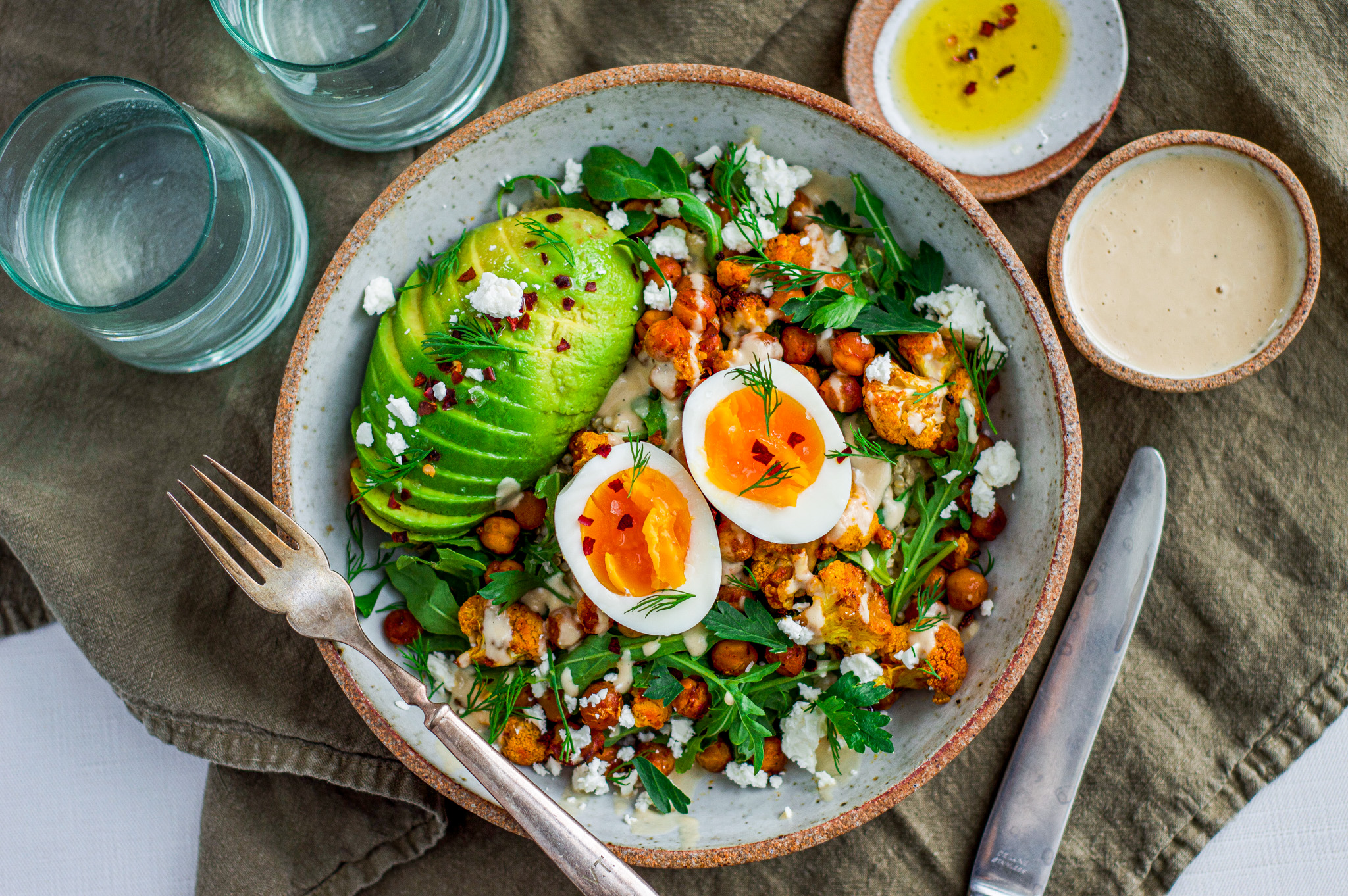
If you loved that...

01.
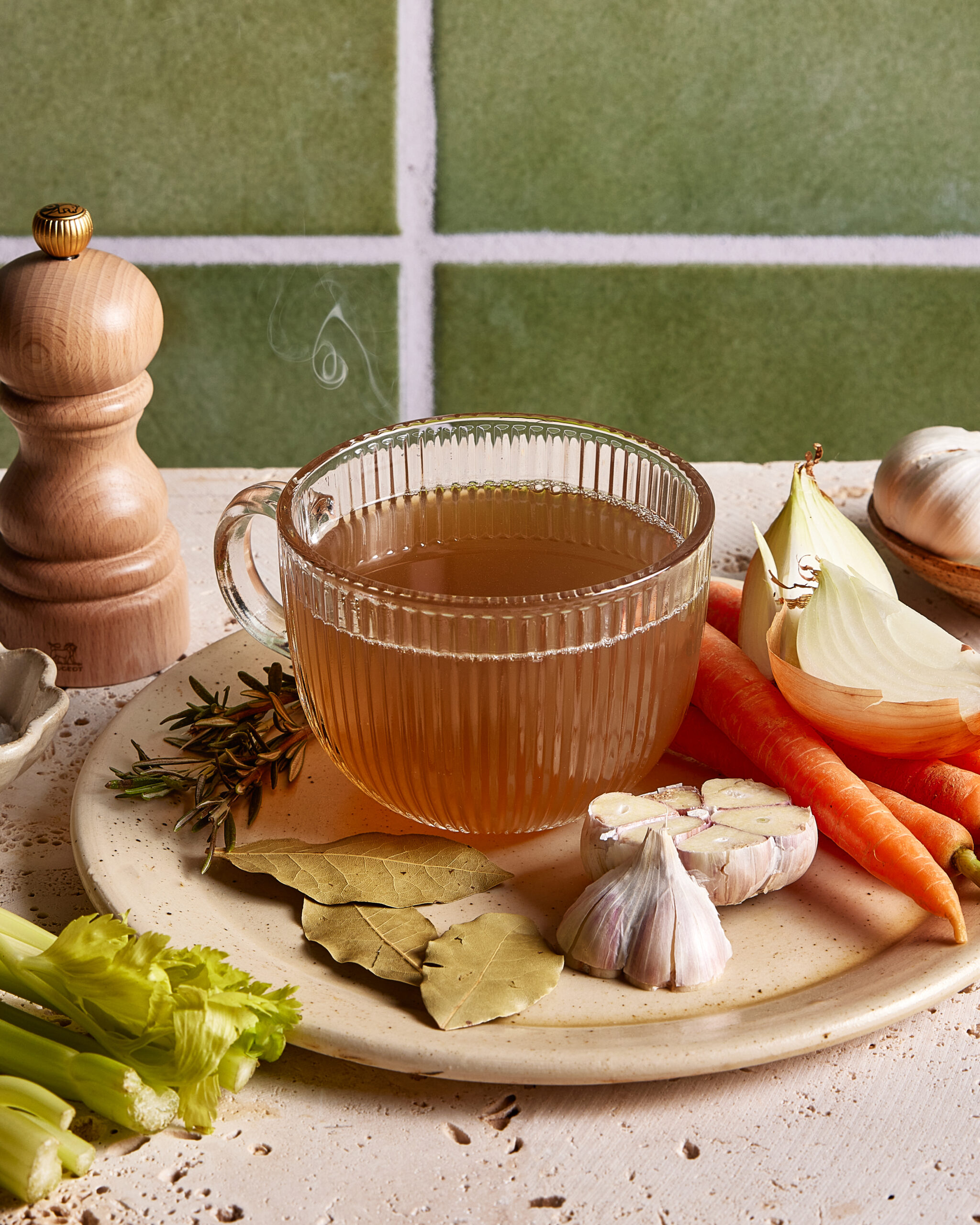
02.
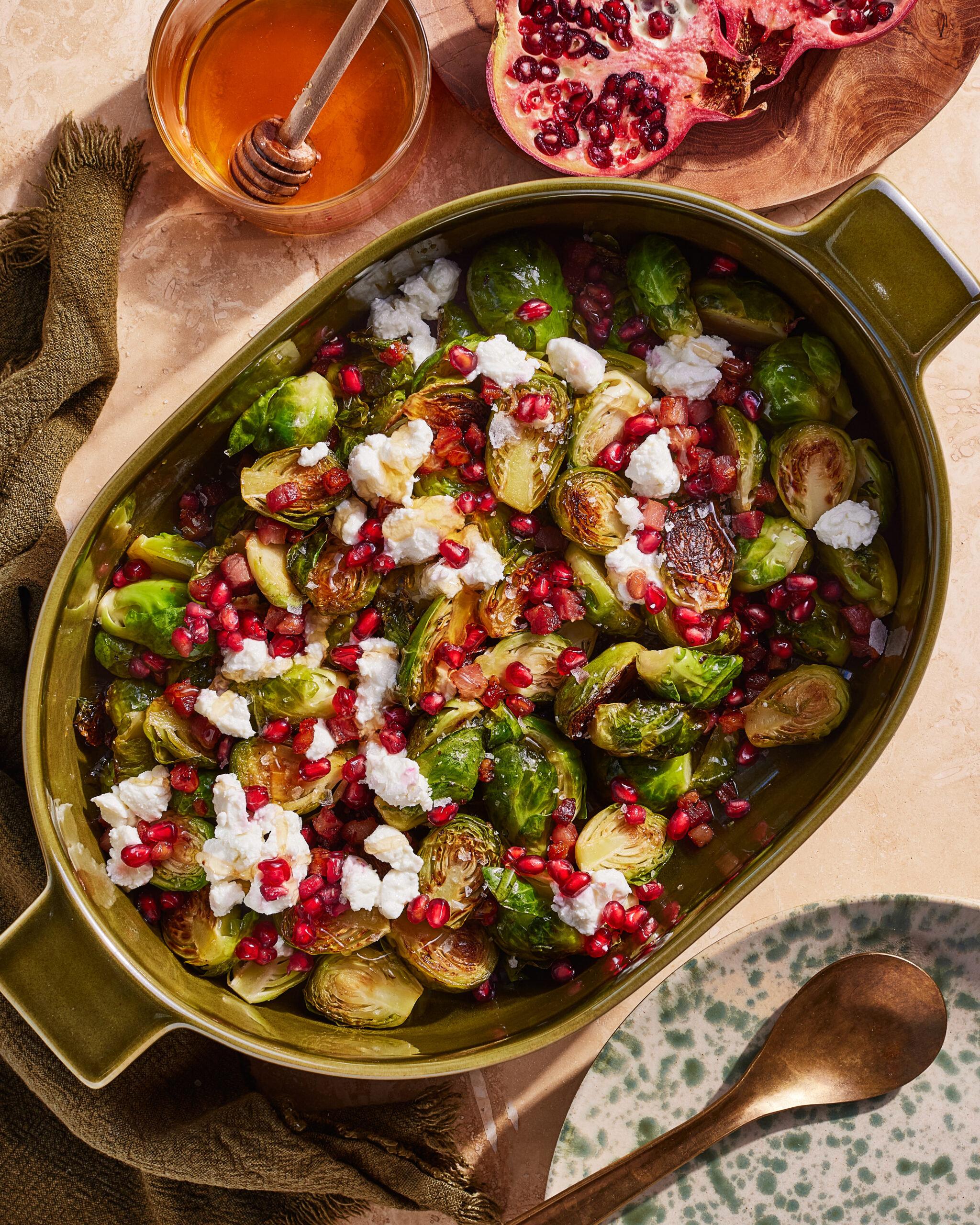
03.
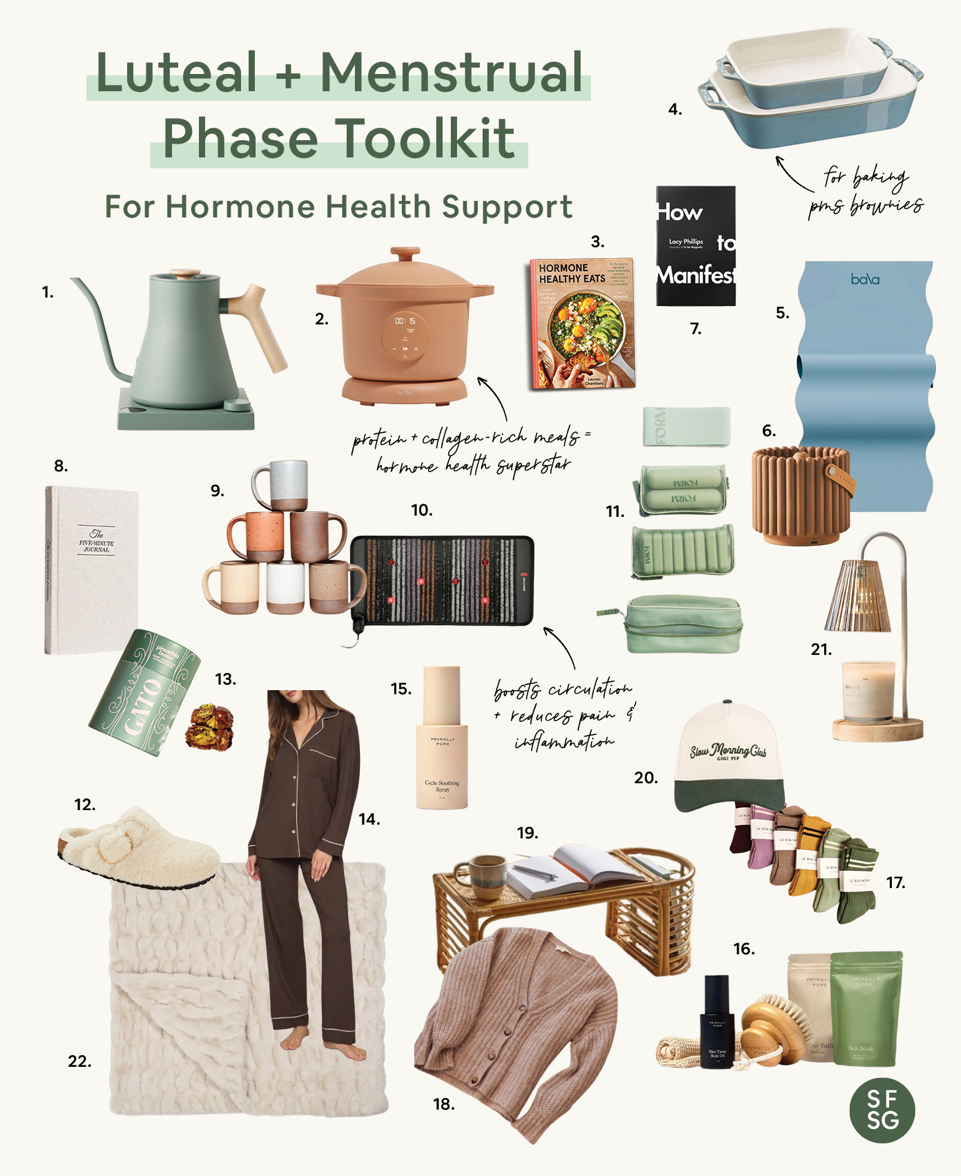
04.
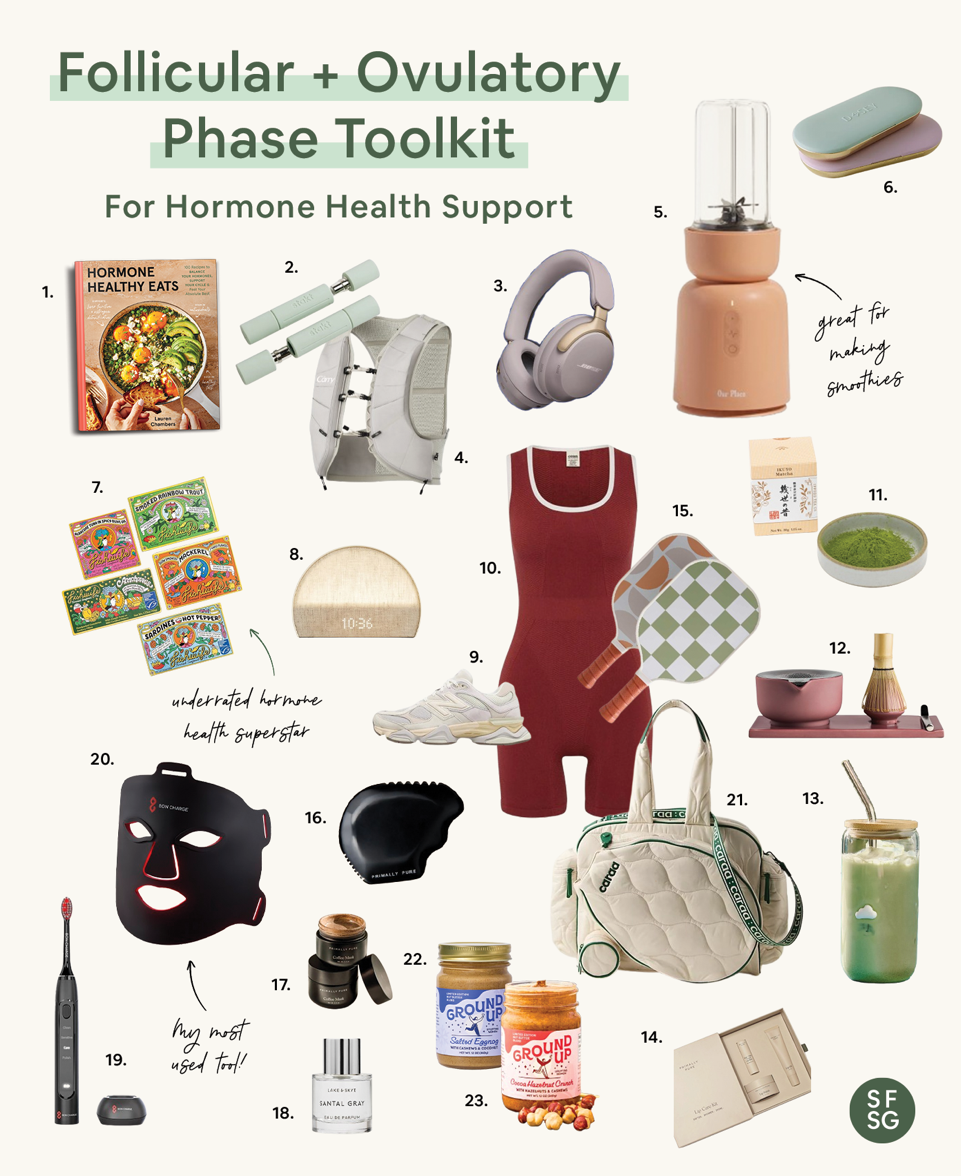
05.
hey!
Keep Browsing
Site
Keep Browsing
Site
the
about
e-books
blog
downloads
quiz
Welcome friend, I'm lauren.
I’m honored to support you on your journey to optimal hormone health + happiness. Thanks for being here babe.

